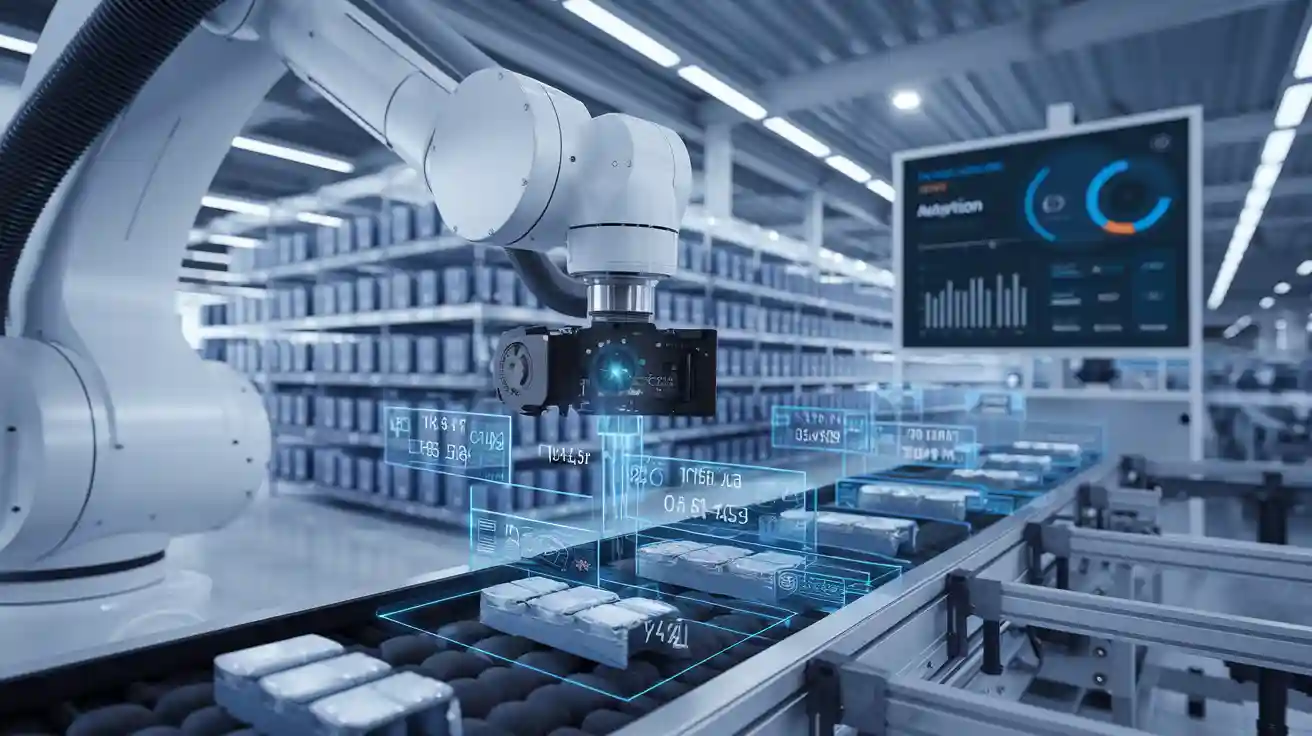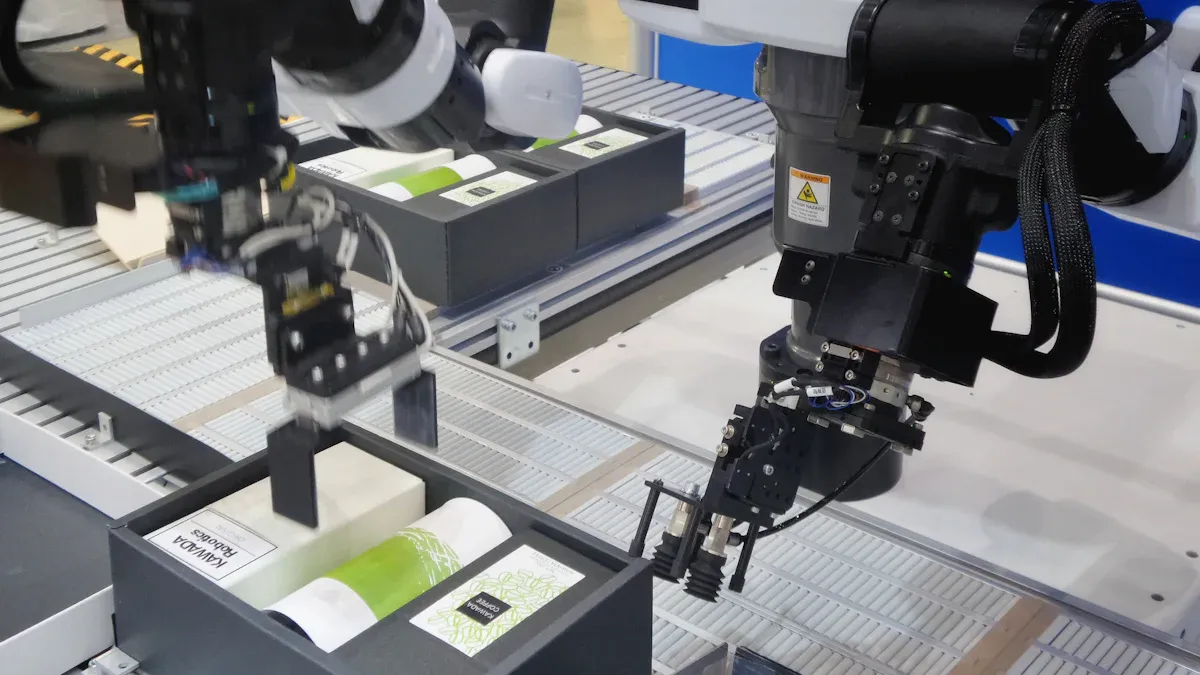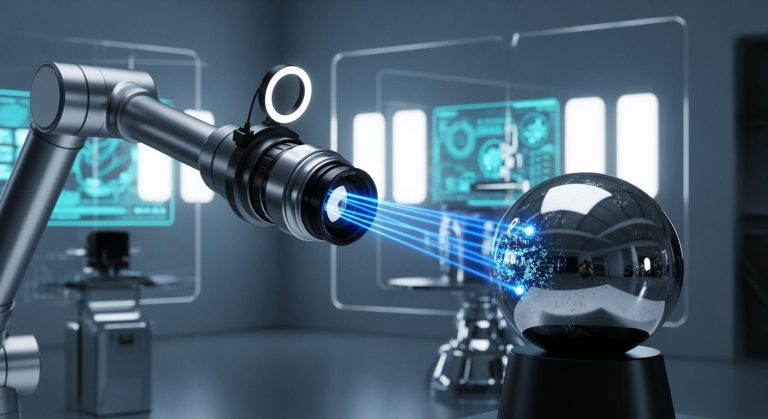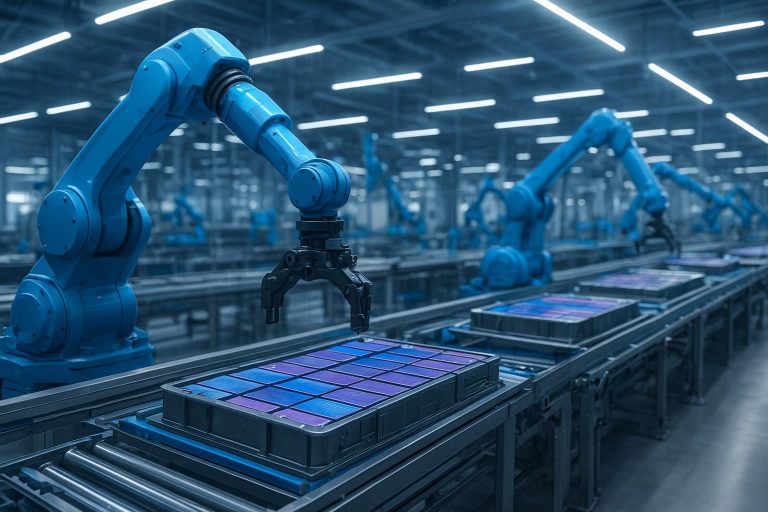
Tennessee stands at the forefront of machine vision innovation in 2025. The state’s rapid growth stems from major investments, thriving startups, and world-class research institutions.
| Category | Details |
|---|---|
| Major Corporate Investments | Oracle, Amazon, and xAI’s supercomputer projects |
| Research Institutions | University of Memphis, Oak Ridge National Laboratory, University of Tennessee |
| State-backed Programs | Launch Tennessee, InvestTN Fund |
| Startup Ecosystem | Metropolis Technologies, AI-focused companies |
The latest tn machine vision system, including AngelEye Health’s AIVision platform, uses advanced AI to boost speed and accuracy. Manufacturers now rely on tn machine vision system solutions for real-time quality control, helping them improve productivity and reduce costly mistakes. Companies seeking greater reliability in their products should explore these systems for their operations.
Key Takeaways
- Tennessee leads in machine vision technology with strong investments, research, and startups driving innovation.
- Modern machine vision systems use AI and high-resolution cameras to detect defects faster and more accurately than traditional methods.
- Advances in 2D and 3D vision, AI, and edge computing enable real-time quality control and smarter automation on factory floors.
- Machine vision systems improve product quality, reduce waste, and lower costs by providing instant feedback and adaptable inspections.
- Successful adoption requires training and overcoming challenges like environmental factors, but benefits include higher efficiency and compliance.
TN Machine Vision System Overview
Key Features
A tn machine vision system brings advanced technology to the factory floor. These systems use high-resolution cameras and smart sensors to capture detailed images of products. They process these images in real time. This helps manufacturers spot defects quickly.
Key features include:
- AI-powered analysis: The machine vision system uses artificial intelligence to recognize patterns and detect flaws that humans might miss.
- Real-time feedback: Operators receive instant alerts when the system finds a problem.
- Scalability: Companies can add more cameras or sensors as their needs grow.
- User-friendly interfaces: Touchscreen controls and clear dashboards make it easy for workers to use the system.
Note: Many Tennessee manufacturers choose a tn machine vision system because it improves both speed and accuracy in quality control.
Differences from Traditional Systems
A modern machine vision system stands apart from older inspection methods. Traditional systems often rely on manual checks or simple sensors. These older methods can miss small defects and slow down production.
Here is a comparison table:
| Feature | Traditional Inspection | Machine Vision System |
|---|---|---|
| Speed | Slow | Fast |
| Accuracy | Moderate | High |
| Adaptability | Low | High |
| Data Collection | Limited | Extensive |
| AI Integration | None | Advanced |
A machine vision system adapts to new products and changing conditions. It collects large amounts of data, which helps companies improve their processes over time. This technology gives Tennessee manufacturers a strong advantage in 2025.
Machine Vision Technology Trends
AI and Deep Learning
Artificial intelligence and deep learning have become the backbone of modern machine vision technology. These advancements allow a machine vision system to analyze images, adapt to new inspection tasks, and improve over time without constant reprogramming. In Tennessee, companies like Bulk Handling Systems and its Nashville-based subsidiary NRT have pioneered the use of deep learning in quality control. Their Max-AI technology uses multi-layered neural networks and advanced vision systems to identify and sort materials at speeds that surpass human abilities. This system acts as an intelligent control center, analyzing material composition in real time and adjusting robotic sorters for maximum efficiency.
Many Tennessee-based projects now use ai image processing to enable robots to make decisions on the fly. For example, industrial robots equipped with machine vision technology can inspect products, detect defects, and sort items autonomously. These systems help manufacturers reduce errors and improve productivity. The integration of ai image processing with machine vision system solutions has transformed supply chain management, allowing for better inventory tracking and more accurate forecasting.
Tennessee’s innovation ecosystem, including senswork Inc. at the ETSU Innovation Lab and the University of Tennessee’s partnerships with Oak Ridge National Laboratory, continues to drive progress in machine vision technology. These collaborations bring together industry, academia, and government to create smarter, more adaptable inspection systems.
2D and 3D Vision
The evolution of 2D and 3D vision stands out as a major trend in machine vision technology. High-speed, high-resolution cameras now capture detailed images of fast-moving products, while multispectral and hyperspectral imaging reveal defects invisible to the naked eye. At the 2025 CVPR conference in Nashville, researchers showcased several breakthroughs:
| Technology Name | Description | Relevance to Machine Vision | Location & Event |
|---|---|---|---|
| FastVLM | Efficient vision encoder for high-resolution images, reducing encoding time and improving accuracy. | Enhances 2D vision processing for real-time applications. | CVPR 2025, Nashville |
| Matrix3D | Integrates multiple 3D reconstruction tasks for advanced photogrammetry. | Improves 3D vision workflows in machine vision systems. | CVPR 2025, Nashville |
| AIMv2 | Multimodal pre-training for large vision encoders, excelling in visual recognition. | Boosts 2D and multimodal vision performance. | CVPR 2025, Nashville |
| World-Consistent Video Diffusion | Models 3D consistency in video, enabling single-image-to-3D generation. | Advances 3D video modeling for machine vision. | CVPR 2025, Nashville |
These innovations allow a machine vision system to measure depth, recognize shapes, and perform complex inspections. In Tennessee, automotive research at the University of Tennessee and Oak Ridge National Laboratory uses advanced 3D vision for robotics and assembly. The combination of 2D and 3D vision with ai image processing enables precise defect detection and quality assurance across industries.
Edge Computing
Edge computing has revolutionized machine vision technology by bringing data processing closer to the source. Instead of sending large amounts of video data to the cloud, a machine vision system can now analyze images locally. This reduces latency, saves bandwidth, and allows for real-time decision-making. In Tennessee, edge computing supports safety systems like Railroad High-Grade Crossing monitoring, where cameras and edge servers work together to detect hazards instantly.
The rise of IoT devices and 5G networks has made edge computing more accessible. Manufacturers deploy ai image processing models directly on edge devices, enabling fast and intelligent responses without relying on remote servers. This approach also improves security by keeping sensitive data on-site. As machine vision technology scales, edge ecosystems help manage resources efficiently and maintain high performance.
- Key benefits of edge computing in machine vision technology:
- Real-time processing and instant feedback
- Lower network costs and reduced cloud server load
- Enhanced data privacy and security
- Greater scalability for large manufacturing operations
Tennessee’s machine vision technology landscape demonstrates strong integration with automation and supply chain processes. Robots use machine vision system solutions to inspect, sort, and track products, while plug-and-play lenses provide high-quality visual input for precise operations. These advancements help companies optimize inventory, improve forecasting, and deliver better customer experiences.
Quality Control with Machine Vision System

Defect Detection
A machine vision system transforms defect detection in manufacturing. High-resolution cameras and advanced AI algorithms scan every product on the line. These systems spot even the smallest flaws that human inspectors might miss. Manufacturers in Tennessee use these tools to ensure products meet strict quality control standards.
National Recovery Technologies (NRT) in Tennessee uses optical sorting and AI to identify and separate materials with high precision. Their technology reduces contamination and improves recycling efficiency. This approach supports sustainability and waste reduction by catching defects early and minimizing waste.
A machine vision system also helps with part positioning. It checks if each component sits in the correct place before the next step in production. This process prevents assembly errors and ensures consistent product quality.
Tip: Automated defect detection not only improves product quality but also reduces the risk of costly recalls.
Speed and Accuracy
Manufacturers gain a major advantage by using a machine vision system for quality control. These systems inspect products much faster than manual methods. They keep up with high-speed production lines and never tire or lose focus.
- Machine vision systems automate inspection, allowing high-speed examination of all products.
- They reduce human error caused by fatigue or subjective judgment.
- Advanced cameras and AI algorithms detect tiny defects and maintain strict quality benchmarks.
- Inspections become standardized, improving uniformity in product quality.
- AI and machine learning enhance predictive abilities and ongoing accuracy improvements.
- Manual inspection often causes bottlenecks, while machine vision systems streamline production and lower labor costs.
Real-world examples, such as 5G-enabled systems from ABB Robotics, show how manufacturers achieve faster and more accurate defect detection. These systems also support part positioning by verifying the exact location of each part in real time.
Adaptability
A modern machine vision system adapts quickly to new products and changing production needs. Manufacturers can update inspection criteria through software, making it easy to switch between different product lines. This flexibility supports continuous improvement in quality control.
Machine vision systems also help with part positioning across various product types. They adjust to different shapes, sizes, and materials without needing major hardware changes. This adaptability ensures that quality control remains strong, even as manufacturing processes evolve.
These systems support compliance with industry standards and regulations:
| Feature | Compliance Support Description |
|---|---|
| In-Sight® Vision Systems | Industrial-grade vision tools for precise inspection, defect detection, and assembly verification critical for regulatory compliance. |
| Barcode Verifier | Ensures codes meet minimum quality standards, demonstrating compliance with industry guidelines. |
| In-Sight ViDi Deep Learning | Enables complex OCR, defect detection, and assembly verification tasks that traditional vision tools cannot handle, ensuring reliable quality control. |
| Fixed-mount Barcode Readers | High-performance code reading to maintain traceability and quality standards. |
| Handheld Barcode Scanners | Rugged devices for direct part mark and label verification, supporting compliance in harsh industrial environments. |
Continuous monitoring and real-time reporting help manufacturers resolve issues quickly. Data analytics from these systems support ongoing improvements and help meet regulatory requirements.
Adoption in Tennessee Manufacturing

Benefits for Local Industry
Tennessee manufacturers see major gains from adopting a machine vision system. These systems help companies cut costs by reducing waste and catching defects early. Automated inspections replace slow manual checks, which lowers labor expenses and speeds up production. Companies report fewer errors and less downtime because the system finds problems before they reach customers.
A machine vision system also improves efficiency. Real-time feedback lets operators fix issues right away. This leads to higher product quality and better customer satisfaction. Many Tennessee factories use these systems to meet strict industry standards and keep up with global competition.
Some businesses choose a low cost machine vision system to start. These affordable options allow small and medium-sized manufacturers to benefit from automation without a large investment. Over time, even basic systems help companies save money and improve their processes.
Tip: Companies that invest in machine vision technology often see a quick return on investment through higher yields and fewer recalls.
Integration Challenges
Tennessee manufacturers face several challenges when adding machine vision systems to their operations. Environmental factors like oil, water, paint, and reflective surfaces can make it hard for cameras to capture clear images. Changes in part shapes or new suppliers sometimes cause false error detections, which complicates the setup process.
Other challenges include:
- Automating tasks that require high precision, such as checking clip placement on engine parts.
- Keeping the system flexible enough to handle new products or changes in production.
- Training staff to maintain and adjust the system as needed.
- Ensuring data quality for accurate defect detection.
Advanced technologies like Cognex In-Sight D900 and VisionPro Deep Learning help solve many of these problems. For example, VisionPro Deep Learning adapts to new images and changing conditions, which improves accuracy even in tough environments. Companies like Automation NTH support customers with training programs, so teams can manage and update their systems confidently.
Note: Ongoing education and support are key to successful machine vision system integration in Tennessee factories.
In 2025, the tn machine vision system reshapes quality control by delivering faster inspections and higher accuracy for Tennessee manufacturers. Ongoing innovation in the state drives new uses for this technology. Companies now use machine vision to guide robotic arms, track inventory, and monitor traffic in logistics. Retailers benefit from improved shelf management and customer analytics. As these systems evolve, they promise even greater efficiency and smarter automation across many industries.
FAQ
What industries use a tn machine vision system in Tennessee?
Manufacturers in automotive, food processing, electronics, and logistics use a tn machine vision system. These systems help companies improve product quality, reduce waste, and meet industry standards.
How does a tn machine vision system improve defect detection?
A tn machine vision system uses high-resolution cameras and AI to spot tiny flaws. It finds defects that human inspectors might miss. This technology helps companies catch problems early and avoid costly recalls.
Can small businesses afford a tn machine vision system?
Many vendors offer scalable solutions. Small businesses can start with basic features and expand as needed. This approach allows them to benefit from automation without a large upfront investment.
What training do workers need for a tn machine vision system?
Workers learn to operate touchscreens, review inspection results, and adjust settings. Many companies provide hands-on training and support. This ensures teams use the system effectively and keep production running smoothly.
How does a tn machine vision system support compliance?
The system checks products against strict standards. It records inspection data for audits and reporting. This helps companies meet regulatory requirements and maintain high-quality output.
See Also
A Comprehensive Guide To Inspection Vision Systems In 2025
Defining Quality Assurance Through Machine Vision Technology
Improving Product Quality With Surface Inspection Vision Systems
The Importance Of Image Recognition In Vision Quality Control
Comparing Firmware-Based Vision Systems To Traditional Methods








